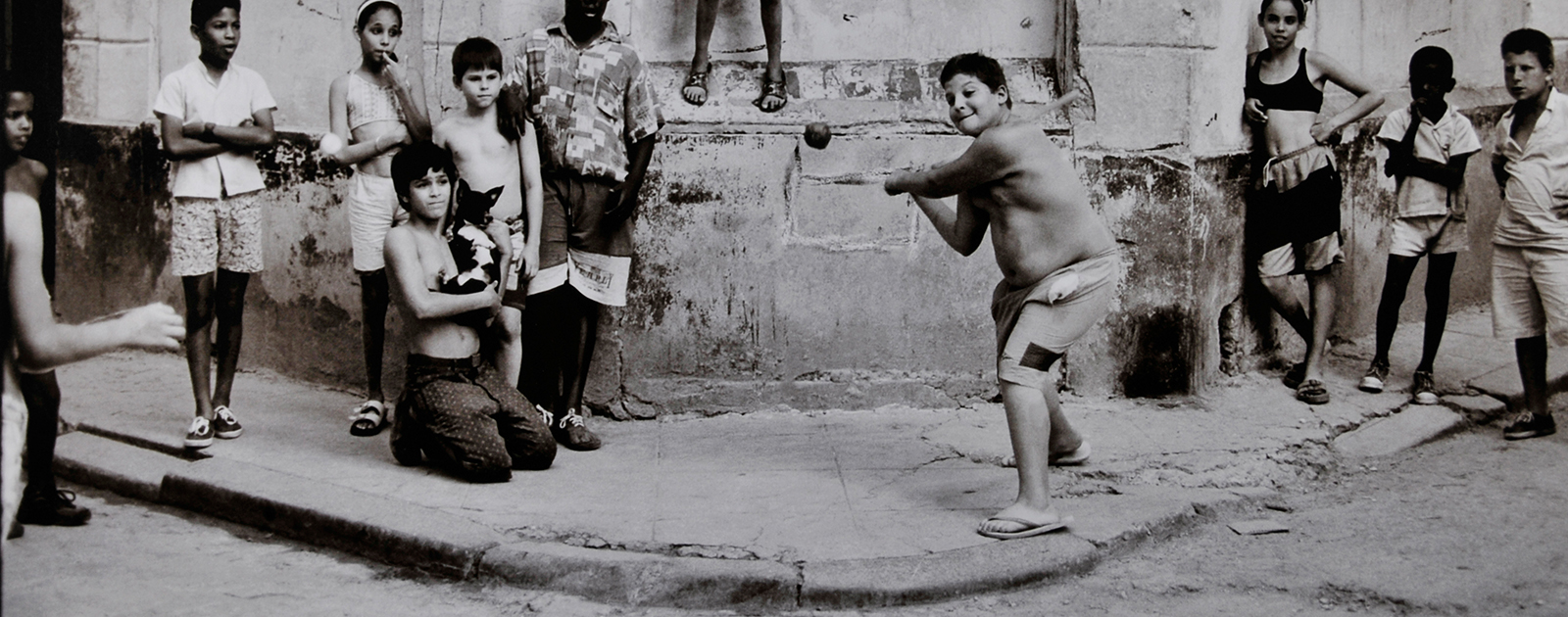Photographer Walter Iooss (YOHSS) once described himself as "consumed by sports and form." Pursuing these twin passions, Iooss has become, according to Steve Fine, Sports Illustrated’s director of photography, “an artist who is quite possibly the best sports photographer ever.”
We've created a puzzle of one of Iooss's photographs that appeared in "And Something Magical Happened": Baseball Photographs by Walter Iooss. Visit the virtual exhibition to learn more about Iooss and his oeuvre, and read on below for Curator Andi McKenzie's description of the image.
Click here to see the entire photograph.
“The beauty of the game is seen when you’re a child—when the ball is thrown to you, nothing else exists in the world.” -Walter Iooss
With his eye for composition and gift for drawing out the emotions of the viewer, Walter Iooss effortlessly blurs the divide between fine art and sports photography. Here, Iooss draws upon his own nostalgia for the street-corner games he played as a child.
Iooss relates the story behind this photograph below:
“There's a famous picture taken in the 1950s of Willie Mays playing stickball in Harlem. I played a lot of stickball growing up and always loved it. I wanted to replicate the Mays photo in Cuba because baseball is the national sport there. It's everywhere. Cuban children play ball in the streets like kids in U.S. cities used to do. It was my last Saturday on this trip and I was slowly weaving through the streets of old Havana, looking for kids playing ball, when I came upon this corner, La Esquina. If you study the picture, you see that every eye, not just the kids' but even the dog's, is on that taped ball. It's the decisive moment, and there's no way to anticipate when you're going to get it.”
When Iooss speaks of “the decisive moment,” he is referencing the English-language title of renowned French photographer Henri Cartier-Bresson’s 1952 photobook, Images à la sauvette (“Images on the run”). The phrase describes the fraction of a second in which elements in motion are in balance, something Iooss has captured throughout his career. Cartier-Bresson’s original French title situates the photographer and the perfect, if fugitive, visual tableau in an almost adversarial relationship with one another—the photographer always chasing, the perfect shot remaining elusive—not unlike the competitive spirit of team sports worldwide and throughout time.





